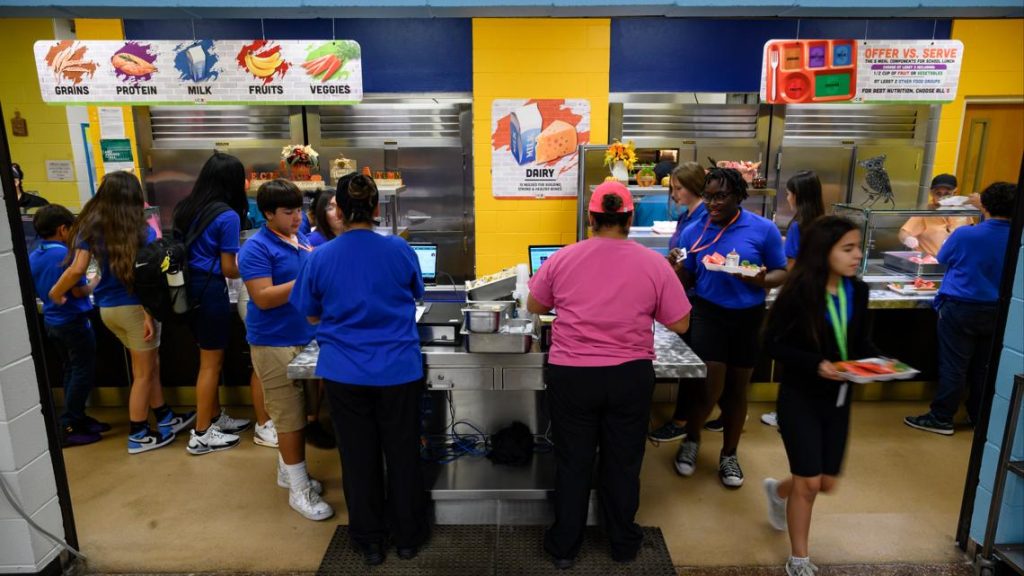A new opportunity is on the horizon for low-income families in Texas this summer. The Summer EBT program, which offers grocery benefits to families with school-aged children, now has $450 million in federal funds available. However, the final deadline is fast approaching for the Texas Legislature to decide whether to participate in this program. Texas did not join the program last summer, and many worry that without taking action, the state will lose out on vital resources that could help feed hungry children and boost the local economy.
What Is the Summer EBT Program?
The Summer EBT (Electronic Benefits Transfer) program is designed to support low-income families during the summer months when children are not in school and do not receive free or reduced-price meals. Under the program, qualifying families receive a debit card loaded with food benefits, which they can use to purchase groceries. Each family can get up to $120 per month in food benefits.
To be eligible for the program, families must meet the income requirements set by the National School Lunch Program or be certified for school meals through SNAP (Supplemental Nutrition Assistance Program) or Medicaid. This ensures that the benefits go to those who need them most.
The Urgency of the Deadline
The final deadline for Texas lawmakers to decide on participating in the Summer EBT program is March 1. Clarissa Clark, the government relations officer for the North Texas Food Bank, stresses the importance of meeting this deadline. She points out that failing to participate means leaving $450 million in federal taxpayer money on the table.
“It’s $450 million in federal taxpayer money that comes back to the state,” Clark said. “It helps with those who are food insecure, and it also puts money back into our economy, so there’s a lot of wins to it.”
By joining the program, Texas can not only help low-income families get the food they need but also stimulate local businesses. When families have more money to spend on groceries, that money circulates in the local economy, supporting stores, farmers, and other service providers.
The Growing Problem of Food Insecurity
Food insecurity remains a serious issue in Texas. According to the nonprofit Feeding Texas, one in six households in the state struggles with food insecurity. This means many families do not have consistent access to enough food for a healthy life. The problem becomes even more acute during the summer months when children lose access to free or reduced-price school meals.
For many families, the Summer EBT program is a lifeline. Without it, local food banks and partner pantries see a significant increase in demand. The North Texas Food Bank, which is part of the Texas Food Policy Roundtable—a group of 80 organizations—has been actively calling for the implementation of the program. In 12 north Texas counties, the food bank alone could receive up to $60 million in benefits from Summer EBT, potentially helping nearly 500,000 children.
How the Program Works
Once approved by the Texas Legislature, the Summer EBT program will provide families with a debit card loaded with food benefits. These benefits can be used at most grocery stores and supermarkets across the state. This is especially critical during the summer when the lack of school meals can lead to increased child hunger.
The program is designed to be simple. Eligible families, identified through existing programs like the National School Lunch Program, SNAP, or Medicaid, will automatically receive their benefits on a monthly basis. This steady stream of support can help ensure that children have access to nutritious food throughout the summer.
Economic Benefits for Texas
Participating in the Summer EBT program does more than just feed children—it also benefits the Texas economy. The infusion of federal funds means that millions of dollars will be circulated within local communities. When families use their EBT cards to buy groceries, the money goes to local stores, which in turn supports jobs and local businesses.
For communities that are already struggling with economic challenges, this extra boost can make a significant difference. It helps keep money in the local economy and can even lead to further investments in community infrastructure and services. In times when many families face financial hardships, the economic ripple effect of the program is a welcome relief.
Voices from the Community
Clarissa Clark of the North Texas Food Bank has been one of the strongest advocates for the program. She explains that the Summer EBT initiative provides a crucial safety net for families. “The initiative gives low-income families with school-aged children $120 in food benefits on a debit card,” Clark said. “They can use that to buy food. If they don’t get the summer meals, demand at our partner pantries goes up.”
Her remarks underline the reality that, during summer, the absence of school-provided meals can lead to increased hunger among children. This not only affects the health and well-being of the young but also places a greater strain on community food banks and charitable organizations working to fight hunger.
The Role of the Texas Legislature
The Texas Health and Human Services Commission now awaits clear direction from the state legislature to move forward with the Summer EBT program for Summer 2025. Lawmakers must decide by March 1 whether to participate in the program. This decision is critical, as it will determine whether Texas can benefit from an additional $450 million in federal funds and help alleviate food insecurity for thousands of families.
If the legislature fails to act, Texas risks not only losing out on these federal dollars but also worsening the food insecurity situation for many households. With one in six households in the state already struggling to access enough food, the stakes are incredibly high.
National Comparisons and Broader Impacts
Food insecurity is a national issue. For example, data from Feeding Indiana’s Hungry shows that seven in ten Hoosiers have skipped meals in the past year. Across the United States, more than half of all Americans will use SNAP benefits at least once in their lifetime. This highlights the critical need for programs like Summer EBT, which provide direct assistance to those in need.
In states where similar programs have been implemented, the impact has been significant. By providing additional support during the summer months, these programs help reduce the number of children going hungry and provide much-needed relief to families struggling to make ends meet. The positive effects ripple through local economies, ensuring that money stays within communities and supports local businesses.
Looking Ahead: The Future of Summer EBT in Texas
The decision to join the Summer EBT program will shape the summer for thousands of Texas families. If Texas lawmakers act in time, the state will not only secure $450 million in federal funds but also provide essential food support to low-income families across the state. This will have long-term benefits, including improved health outcomes for children and a stronger, more resilient local economy.
On the other hand, failing to participate could lead to increased pressure on food banks and a higher incidence of food insecurity during the summer months. With a significant number of households already struggling, this could have far-reaching consequences for community well-being.
Conclusion
The opportunity to access $450 million in federal funds through the Summer EBT program is a crucial one for Texas. With one in six households in the state experiencing food insecurity, the program could make a significant difference in the lives of many families. By providing up to $120 per month in food benefits, the initiative will help ensure that children have access to nutritious meals even when school is out.
The economic benefits are equally important. The additional federal dollars will circulate within local communities, supporting small businesses and boosting the local economy. As Texas faces the final deadline on March 1, the decision by lawmakers will have a lasting impact on the state’s social and economic future.
It is now up to the Texas Legislature to act decisively. By opting into the Summer EBT program, they can help alleviate food insecurity, support the local economy, and provide a safety net for the most vulnerable among us. The stakes are high, and the benefits are clear—this is an opportunity that cannot be missed.
Disclaimer – Our editorial team has thoroughly fact-checked this article to ensure its accuracy and eliminate any potential misinformation. We are dedicated to upholding the highest standards of integrity in our content.





More Stories
How $450 Million in Federal Funds Could Secure Food for Texas Kids This Summer and Revitalize Local Economies
How $450 Million in Federal Funds Could Secure Food for Texas Kids This Summer and Revitalize Local Economies
How $450 Million in Federal Funds Could Secure Food for Texas Kids This Summer and Revitalize Local Economies